President of the HSW Company: Borsuk IFV and Unmanned Turrets Among Our Priorities
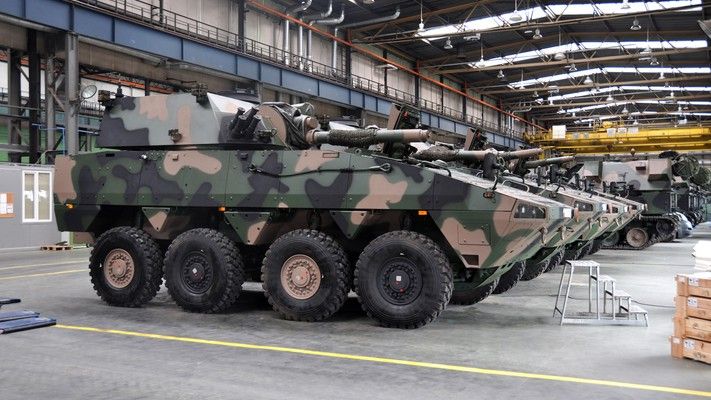
Bartłomiej Zając, President of the Management Board at the HSW S.A. company interviewed by us, outlined general framework of the efforts undertaken with regards to the Krab howitzers, Rak mortars and Borsuk IFV. We also discussed the unmanned turrets and the dialogue concerning manufacturing of the barrels for the Leopard 2 MBT. Finally, we also had a chance to mention the HSW’s plan to return to the civil market.
Jerzy Reszczyński, Defence24.pl: You have been recently appointed the President of the Management Board at HSW. Now is an important time for the company. HSW is dealing with manufacturing and key R&D initiatives. What are the plans made by the company, for the upcoming year?
Bartłomiej Zając, President of the Management Board, HSW SA: We have begun the year 2019 without any delays. First and foremost, we want to successfully accomplish the remote controlled turret module R&D study (ZSSW-30) development study and develop a prototype of the “Borsuk” new amphibious IFV. These are our priorities. The products in question are going to become the driving wheels of our business for many years to come.
So far, the management board at HSW is formed by one person. Are any changes planned within that regard?
I hope that the composition of the management board would be complemented in February. A competition is going on, aimed at appointing another two members. I have a good feeling about this. I believe that we will dynamically proceed, with a full team, towards undertaking further effort.
What is the financial starting point for 2019 then? Your predecessor was expecting that HSW would “close” the 2018 with sales result at the level of PLN 1 billion. But it turned out to be a slight overestimation, did it not?
Until the moment when full and official financial results summary is published, we may only speak of certain estimations and assumptions. We could mention an unprecedented income at the level of PLN 700 million and about profit in an amount of 37 million. Such data makes it possible to think about the future, about the investments, about security and safety, about employees and about their development. The results show that HSW, as of today, is in a good shape, financially. In my opinion we are one of the PGZ companies that can be ranked at the top.
A few years ago the situation at HSW was very tough. The employees had to make sacrifices, while the atmosphere, in general, was far from optimistic. At the moment we have effectively entered the phase in which Rak and Krab systems are series manufactured. This process is the bloodstream of the company as a whole.
Today we are capitalizing on the achievements, created through hard work and sacrifice. Krab and Rak can be perceived as products that are fully refined. We have managed to integrate the Krab’s turret on a Korean-made chassis, and we have launched very difficult K9PL/PK9 platform production process. We meet our contractual commitments on time and in a manner that is reliable. Thus I do not hesitate, when I am speaking of success. In circumstances as such the future may be planned without worrying about the current activities.
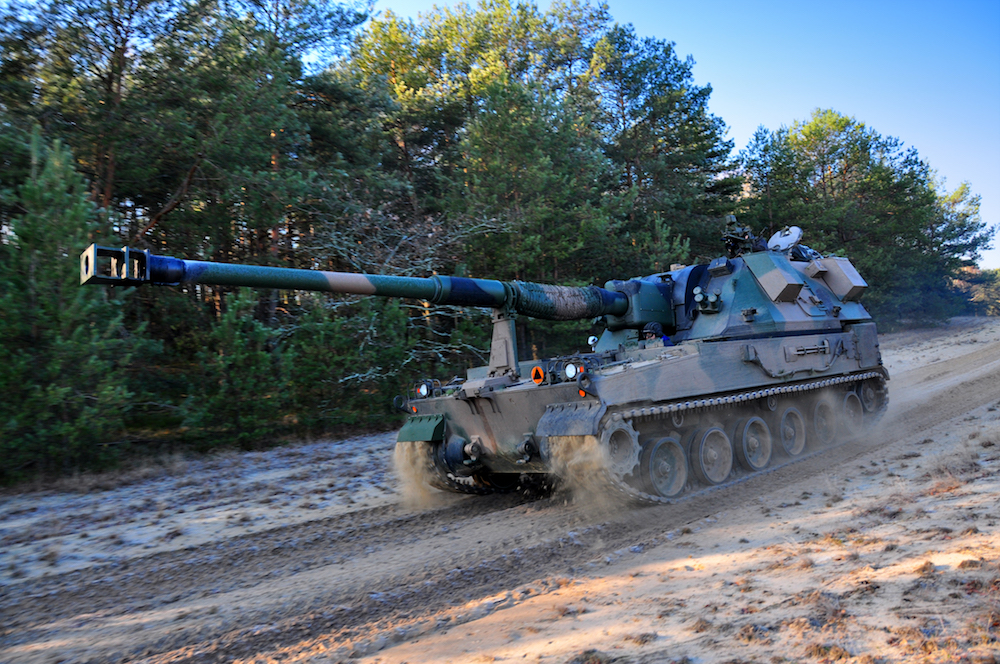
What refinements could be introduced?
This is a question that we're asking ourselves on a daily basis. One of the weaknesses of the Polish defence industry is the weak civil manufacturing segment. HSW resigned from participating in the civil market in 2012, after selling a part of the company to the Chinese LiuGong entity. Considering the tough situation, it was decided that the military division shall be saved. The company said goodbye to the construction equipment business that has been, for decades, a highlight of the HSW brand, also acting as one of its pillars.
At the moment, when the situation at the company is different, we are working towards returning to the civil market. The main goal is to diversify the income sources, currently based around military products and the budget provided by the Polish Ministry of Defence. We want to enter the civil market in an environment that would be more competitive. Establishment of this second pillar is perceived as one of the challenges that HSW is about to face, starting from 2019.
What is the outline of that vision?
We are not going to head towards large scale or mass production of simple products, where scale has a decisive meaning, when it comes to revenue. We are rather headed towards the domain of highly advanced technologies, products that are technologically convoluted, ambitious, allowing us to get a high margin. This can be facilitated by our manufacturing hardware and by the know-how of our employees.
The contracts that we are working on now, concerning 64 Rak mortars and 96 Krab howitzers, do not allow us to utilize the scale effect yet. The volume of the orders makes it impossible to completely optimize certain processes. However, we are still making efforts to reduce the costs. Nonetheless, we are not in control of every aspect of the process here.
We must maintain numerous services and divisions, as per the requirements formed by the company mission. We are taking special care of the design department, pre-manufacturing department, research department or of the quality department. Despite the aforesaid cost, we still have some reserves to use. Modern, highly efficient, precise and expensive machinery is unique on a European scale. This machinery will probably work during three full shifts.
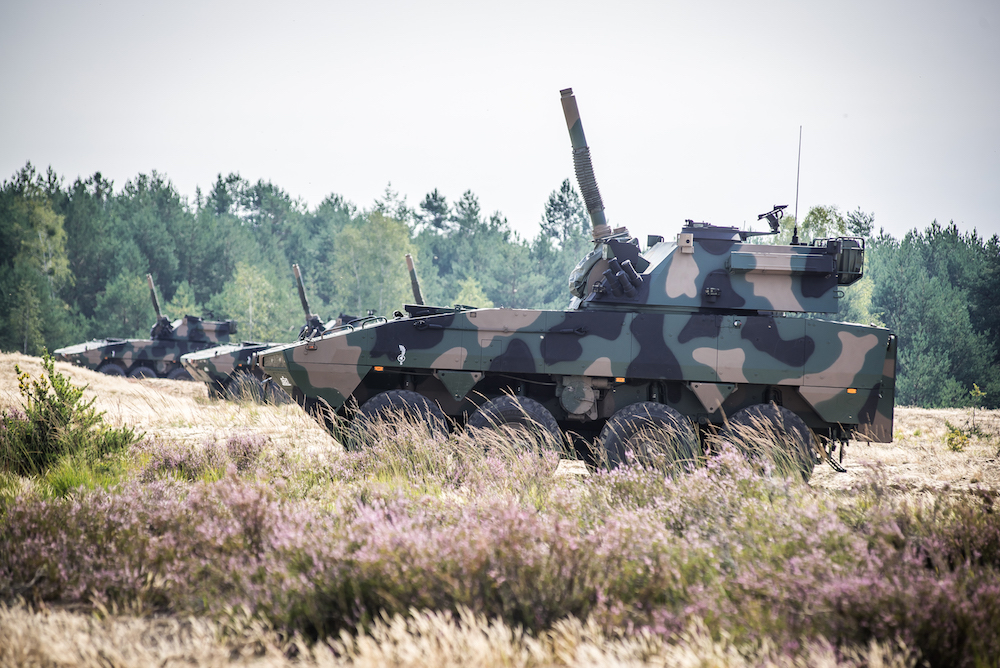
There is little time left. Rak mortars manufacturing is to end in 2019, while the howitzers agreement would be completed in 2024...
We are continuously working on polonization of those. Here we are referring to non-polonized elements of the Krab howitzers. In this way, we are sort of “cleaning up the license leftovers”, also continuously verifying the supply chain. All of the above is being done to maintain our competitiveness, and thus readiness to enter the foreign markets. Without going into details I can state that our products enjoy a lot of interest.
The newly formed 18th Mechanized Division would expand the domestic HSW’s target market, would it not?
The assumption made is, that this element is to receive modern armament and equipment. Intensive effort is going on, along with negotiation at a number of levels. That effort concerns prolongation of the Rak and Krab platforms series manufacturing. In the autumn this year the military is scheduled to receive the 8th Company-level fire module of the Rak mortar system (equipment set for a fire support company - ed.). Stopping the production would translate into a closure of cooperation ties and suspension of the supply chain. Restoring of those would require time and money, since the agreements would need to be created from a scratch. The Polish Ministry of Defence knows that.
Many of our suppliers and business partners treat the small-scale production for the military as a matter of prestige, and it is not always translated into profit. I think that the moment when entirely new agreements are concluded would pose a chance to multiply profit, which may also heighten the production cost by several percent.
So, apart from the hope to quickly negotiate extension of production in case of Rak and Regina projects, there is still a “runaway” possible, with and towards new products...
This is the assumption that we’ve made. This year we want to hand off the ZSSW-30 remote control turret module for qualification tests. Rapid completion of those tests will make it possible to launch production of this turret system in 2020. And even the Americans have been impressed with and appreciate this solution. I can assure you: no threat is present for the schedule of this project that has been already arranged. Nevertheless, we should all be aware of the profile and nature that the R&D efforts entail.
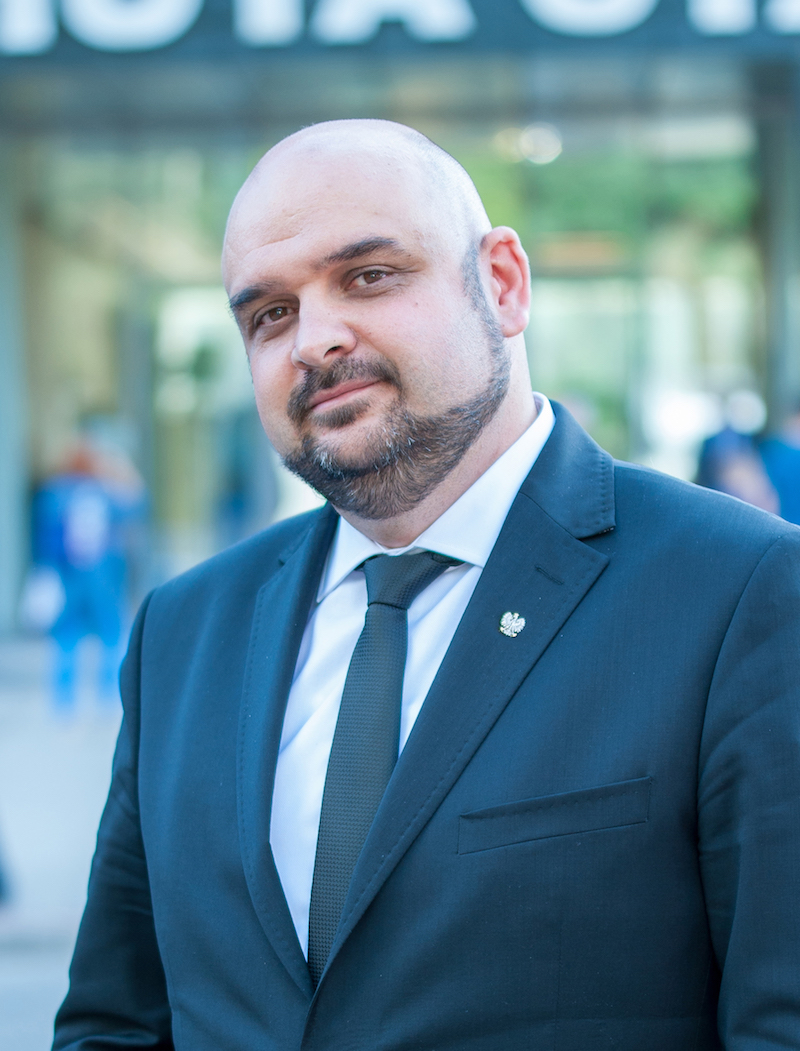
Not everything may be a subject to a forecast.
I am under an impression that the Polish industry is mature enough not to promise too much. We have made certain assumptions, we have a way to implement them, but we are also aware of how complex and time-consuming qualification test programme may be. Launching that programme, we cannot predict all of the circumstances and factors that could emerge, along with their interaction that could influence the varied components of the product.
The development of the turret module has been conditioned by a thorough factory test programme. These tests have provided us with huge amounts of know-how and experience. Thanks to the above we have a full view of the system that we have created together with our PGZ partners: PCO, ROSOMAK, and also with the WB Group. We know what we can do, and we know what should be enhanced and how it should be done. All of the above makes it possible for us to look towards further work and towards the end of 2019 with a certain degree of optimism.
Czytaj też: MSPO 2018: The Polish Borsuk IFV Taking Shape
There are some legal conditions and assumptions made, to classify some of the factory tests as a part of qualification. However, we assume that ZSSW-30 would pass a complete qualification test programme. We do not want to shorten some of the procedures. Our assumption is that the more thorough the qualification test phase is, the less troublesome the equipment is going to be, when operated by the active military units.
So the goal is to achieve perfection?
I would say, we’re striving to approach perfection continuously. The infancy period is troublesome for any new military equipment, used by any army. HSW, as a manufacturer, is going to remain ready to rapidly and effectively respond to the potential emerging problems. In the software and ITC area related to the latest armament and equipment one cannot predict all scenarios and circumstances in which the equipment is going to be used in combat, at least at the stage of design, or at the stage of preliminary or qualification tests. It is important though to know how one should react and how the required adjustments should be made.
Undoubtedly WITU [Military Institute of Armament Technology] and WITPiS [Military Institute of Armoured and Automotive Technology] facilities will help us to expose further sensitive areas where improvements could be made.
Despite the above, can any specific dates be provided?
ZSSW is to be handed off for qualification tests in April. The schedule lists the year 2020 as the date when ZSSW-30 turrets would begin to be delivered to the Polish military. This requires a good collaboration to be established at the consortium level, as well as between the consortium and the MoD. The delivery term for some parts is close to a year.
I would like to ask a direct question: Is the HSW S.A. company in possession of all of the technological and legal know-how resulting from the Wisła offset, to launch manufacturing of the Bushmaster II ATK44 S cannon, in the twin-calibre 30/40 mm variant?
The modernized barrel manufacturing facility of ours remains in possession of capabilities to manufacture barrels within calibre range from 30 to 155 mm, that are up to 8 meters long, or above. We are ready to take steps required to manufacture the Bushmaster II cannon in the stretch variant. HSW already is in possession of expertise required to do so.
This is in our interest, and in the interest of the Polish defence industry as a whole. Any production launch as such requires the details to be arranged with the US partner. Here we are referring to acceptance of our technology/process which may differ from the ones used in the US. The above also concerns the test procedures applicable in case of the cannons manufactured by us.
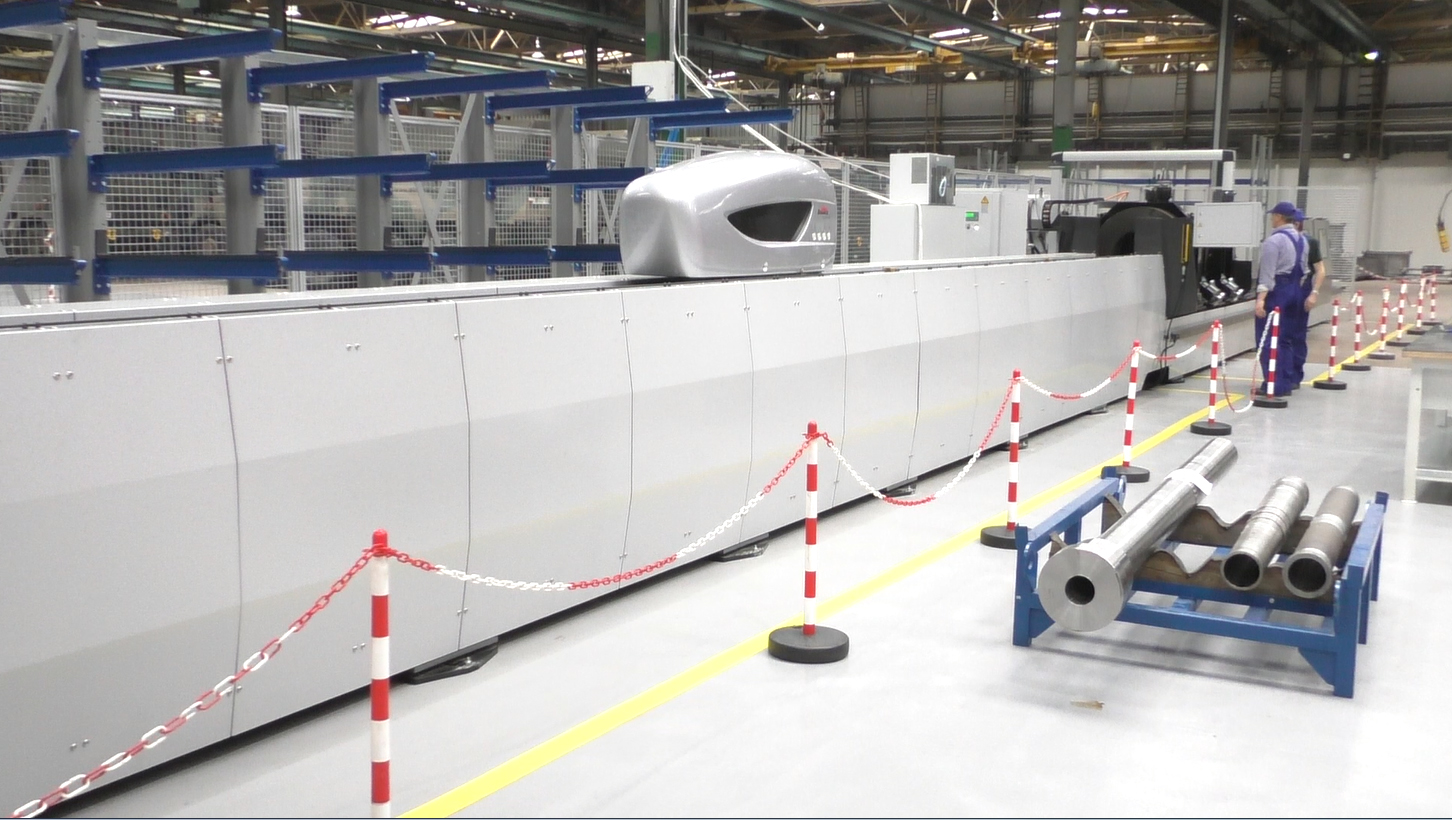
Let’s discuss the barrel manufacturing facility some more. Can the HSW CEO declare it clearly, that the company also remains in possession of know-how required to manufacture 120 mm guns for MBTs, meaning that it could act as a Polish supplier of parts required for carrying out the Leopard 2PL MBT polonization programme?
Let me repeat: we are ready to manufacture a complete range of artillery barrels, within the calibre range between 30 and 155 mm. At the moment we are looking for solutions that would make it possible for us to diversify the production. Thus, we have made a decision to procure another system designed for the purpose of machining long barrels in Spain. The system is going to begin operation in a few months.
The barrels manufactured by us enjoy good reputation, they are praised for their top quality. This is a major source of goodwill. However, production for the Polish military alone exhausts our manufacturing capacity. If we want to deliver our products to foreign customers, we need to enhance those capabilities. We want to earn money on the basis of our know-how that remains unique, in Europe and globally. This has been proven by numerous RFIs we receive from a number of countries. I can confirm that we are ready to manufacture barrels and complete 120 mm cannons for MBTs, also for the purpose of carrying out the Leopard 2PL upgrade.
Negotiation on that matter is currently in progress, and it involves both the Germans, as well as our Ministry of Defence – that’s all that I can say here. Rheinmetall, our partner, is currently snowed under with a significant workload, and thus the company is open to cooperation. We want to make use of that moment, in order to create synergy between us. To support our partners in time when they experience lack of manufacturing capacity. I believe that we can create mutual benefits for both parties, emerging on the grounds of this relationship.
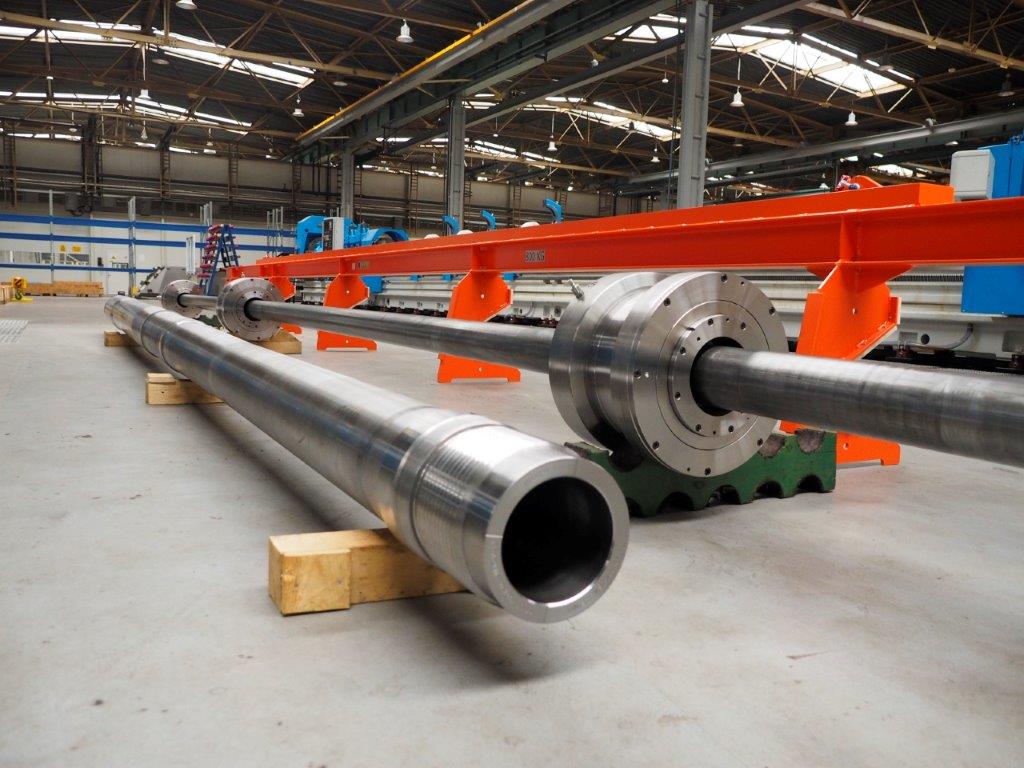
So, have any signs emerged suggesting that the Germans would like to invite HSW to the work aimed at developing the new 130 mm MBT gun?
This gun is in its infancy, when it comes to the tests in which it is taking part. At this stage, we cannot talk about any access to the manufacturing processes. Personally I doubt if the Germans are going to be willing to share the said technology with anyone.
Rak mortar provides the facility with huge amounts of conclusions and data drawn from the military and operational tests, allowing HSW to create an enhancement programme and upgrades for the mortar that would enhance its capabilities...
It’s true. We are receiving feedback, conclusions, and correction suggestions. We listen to those voices in a careful manner. The concerns of the soldiers using our products are especially important to us. Some of the remarks are rejected as irrational, for instance due to the fact that they would not be affordable or in case when changes as such are not feasible technically. However, some of the modifications are being introduced in an ongoing manner. We also use them as a starting point for further development.
We want to achieve a higher rate of fire for the mortar, by changing the loading system layout. The Polish Ministry of Defence is interested in changes as such as well. And we will implement them, also tailoring our automatic mortar to fire smart precision rounds. However, the Ministry should designate a specific type of ammo first. We cannot work blindfolded, paying attention to each and every solution available globally.
And what could the further stages of development be, for this design?
I see the future of the artillery in automation of C2 and operational procedures. This would enhance the effectiveness of the platform and improve the crew safety. Thus, within 5 years to come, I see Rak becoming an unmanned combat platform that could be placed on a remotely controlled unmanned or on a manned carrier.
As for now, the Rak turret may fire rounds without being manned. Hence it can be seen that we are quite close to the target solutions. Also, in case of the platforms themselves, we are looking for innovation in the area of engines and drivetrain. We have gathered some experience already, with regards to hybridizing the drivetrain of tracked combat vehicles.
We can go even further, introducing electric motors only. Thus, we would bypass the weak point of the Polish defence industry: the lack of engines-related know-how. At the same time, the Polish industry has some significant experience gathered, in the area of electric drives - for instance in case of buses. All of the major players are working in this area, all around the world. The electric drive entails a number of benefits. The vehicles are lighter and run silently.
As they carry no flammable fuel, they are more resistant to fires and their IR signature is diminished. Finally, vehicle as such is cheaper to operate and manufacture.
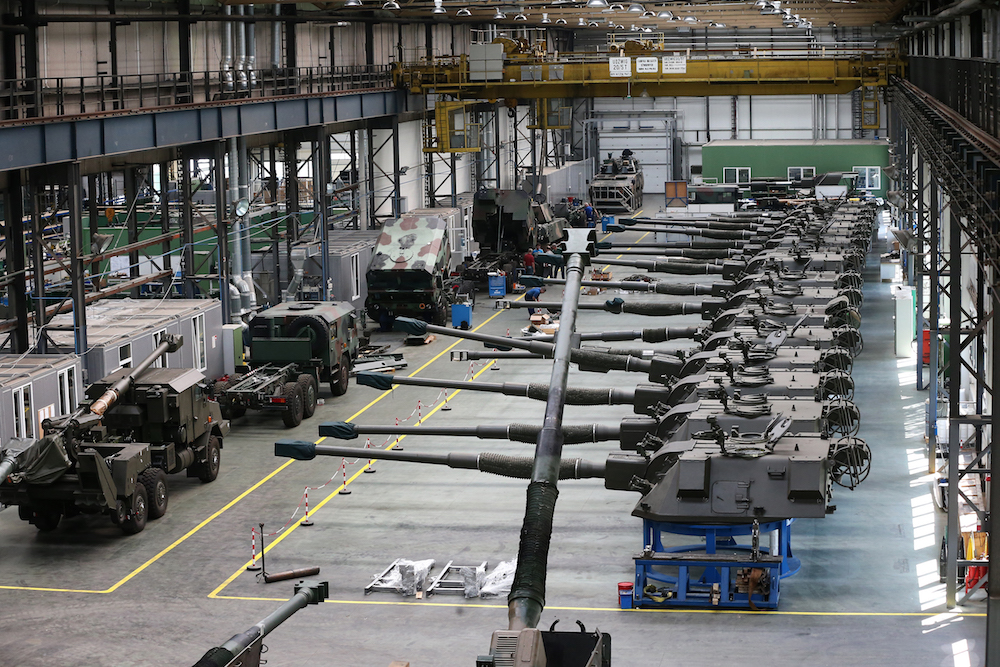
ZSSW-30 is also related to the Borsuk programme, worked on by a consortium led by HSW. How can one define the current status of the IFV programme in question?
Following a turbulent period, including the risk of funding being suspended, I think that the project is going well. I would like to note one issue here, which is quite important. The project is being carried out on the basis of an agreement concluded with the National Centre for Research and Development, with a budget that is not really even close to PLN 100 million. For the sake of comparison, the Puma IFV programme lasting 11 years had a pricetag of one billion euros - 4-5 billion zlotys. We have a little over 70 million zlotys available to work on a key project, with critical relevance for modernization of the land forces and of the military as a whole.
To make it clear: it is not a problem for us. We are carrying out the work assigned, within the scope that reaches beyond the scope of commitments that we’ve made. However, one should remember that this project is being worked on under the guidance of the National Centre for Research and Development, not the MoD. This matter has been brought up many times. We have been suggesting that the NPBWP programme shall become a development project monitored by the Polish Ministry of Defence via the Armament Inspectorate. It is a serious undertaking. It bears a significant meaning for safety of the soldiers and for the combat capabilities of our armed forces.
Where HSW places itself, on the timeline of the NPBWP project?
A model used for tests has been developed. We are working on a prototype now. I can confirm, as I face this question quite often, that Borsuk has achieved very good results within the scope of its open water amphibious capabilities, and the tests within that scope have been taking place on the waters of the Zegrze Reservoir. We have gathered precious data related to the phenomena emerging when the hull gets in contact with the water, when the vehicle exits the water body, we also know how the vehicle behaves when confronted with a wave. I would like to add that the tests concerned a vehicle weighing 26 tonnes, 1000 kg more than it was initially assumed.
How was the vehicle configured? Did it carry the ZSSW turret?
Of course, during the tests, the Borsuk platform was fitted with a weight equivalent of the ZSSW-30 turret system. The tests concerned the hydrostatics, sealing of the hull, balance, drivetrain (powerpack, tracks and thrusters) and the elements of the system that allows the user to control the IFV in the water. We are still working on ballistic/IED/mine protection to demonstrate a prototype that would be viable for factory and qualification tests. This is to happen in late 2019. We are analyzing a number of variants and concepts. In the area of IED/mine protection we are working closely together with the Military University of Technology and the Military Institute of Automotive and Armoured Technology.
A number of tests has already been carried out, further tests have been planned. Each of those tests brings us a step closer to the final solution. In this way, we are jointly creating an invaluable body of know-how and experience. Never before has the Polish industry been working on IED/mines protection for tracked and amphibious platforms.
This is a generational leap in the Polish industry, is it not?
Yes. Certainly. This is a very difficult, yet unprecedented task, at least in case of the Polish industry. I will be able to tell you more, once we achieve the amphibious capability in conjunction with the required level of protection, and this is the goal towards which we are consequently headed.
From the very beginning of the project we want Borsuk to be flexible within the scope of upgrades and modifications, further development and creation of special purpose variants. Here I am referring to implementation of a mortar turret, engineering or reconnaissance equipment, including ABC reconnaissance equipment, medical equipment or even a SAM system.
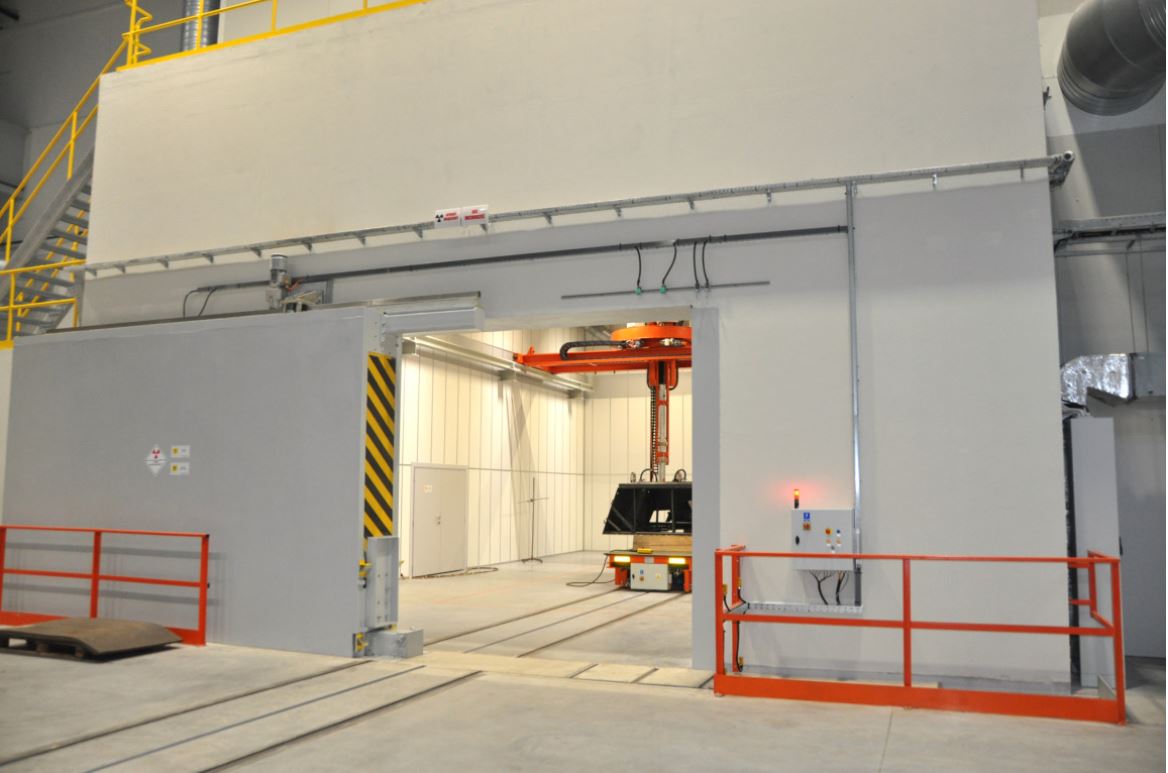
Where HSW is, when it comes to its involvement in the Wisła programme now?
We are talking with the Americans now, discussing the financing and the scope of work assigned to us, so that the Polish industry can use the transfer of technology to the fullest.
Apart from the launcher itself, the benefits stemming from obtaining the 30 mm cannon manufacturing technology are most important for us. The talks are headed towards conclusion of the agreements which is going to happen quite soon. Let me remind you: the first launcher is to be ready in 2020. All of the investments planned within this programme are thoroughly scrutinized, also within the scope of making use of them in other initiatives.
Czytaj też: “Kryl” Going Through a Renaissance?
The Kryl howitzer? What is the status of that project?
We are still working on some of the documents, however, the howitzer has been drivable, it has been shooting and carrying out the tasks assigned since a couple of years now. This has been confirmed by numerous tests carried out locally and abroad.
Why is there no decision then, on continuing the programme and proceeding to further stages?
I have no right to make statements on behalf of the military here. My job is to finalize this project in line with the assumptions and agreement concluded with the National Centre for Research and Development. Then the Polish Ministry of Defence would decide whether it wants a system as such or not. If so, then the conditions and modifications shall be defined, in order to meet the requirements that were undefined when the project was launched.
Kryl requirements have been modified multiple times over the term of the project, which made the work really complicated, as early as at the design stage. We are interested in manufacturing this system, however, the project run by the National Centre for Research and Development needs to be finalized in line with the agreement. Only if this happens, we will know what remains at our disposal. Without passing the factory and qualification test phases, we have no grounds to issue final, relevant assessment. Then, the project needs to be a subject to a settlement.
So far, we've been facing a paradox: the product has been in existence since many years and we cannot push ourselves through a stack of documents, without which the official test programme cannot begin.
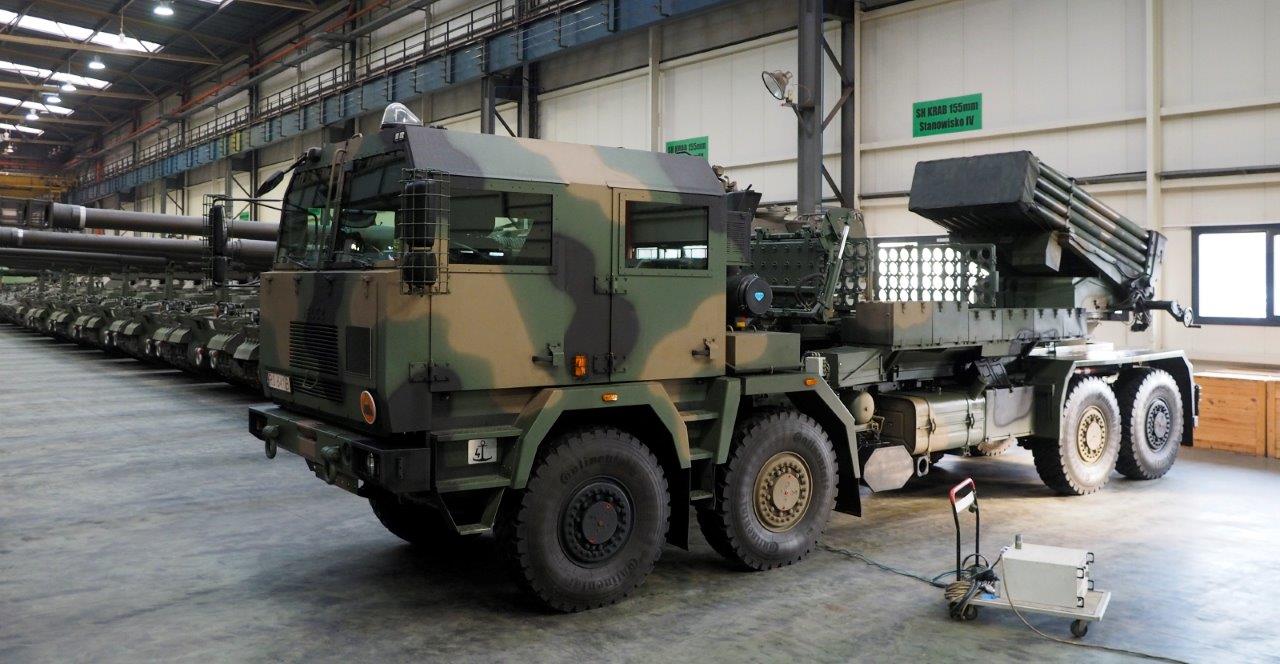
And Langusta-2? The MoD suggests that this system could be introduced into the inventory of the 18th Division.
If a signal as such is sent, we will be discussing the conditions that would need to be met to deliver this product. However, there is only a small number of RM-70 systems available in the military and they are scattered, thus it is going to be difficult for the military to select Langusta-2 as a basic building block for a homogeneous Squadron Fire Module. The solutions used in Langusta-2 could be used to further upgrade the BM-21 or WR-40 Langusta systems.
Here we are referring to automatic targeting capability for instance.
Maybe the “conventional” Langusta system based on the BM-21M launcher would be resuscitated? Meanwhile, one of the foreign customers is interested in the Langusta-2 platform. However, I cannot disclose any more details now.
Which of the products that are being manufactured now or that are being prepared, face a prospect of export success?
Undoubtedly the ones in case of which no license-related limitations are present, or in case of which components that are a subject to export limitations are not present (such as powerpacks). I am referring to our own, domestically developed products, to which we have full rights. Rak turret module, ZSSW-30 and Borsuk can undoubtedly be placed at the top of the list.
As HSW departs from civil sector, is this the end of the company’s presence on the engineering equipment market?
No, not at all. This domain is usually not appreciated enough. It is not really as spectacular as the combat vehicles sector is. However, the current and future requirements of the military also point to the areas in which HSW may have a lot to say. This is a good opportunity to consider synergy, within the framework of the PGZ group. The above refers to optimal workload distribution and rational cooperative network. Only then, implementation of the individual programmes would be reasonable economically, providing an added value for as many of the PGZ companies as possible. We will gladly get involved in those processes, and manufacturing engineering equipment for the Polish military is a great opportunity to do so.
As a manufacturer of artillery systems we’re not cutting ourselves away from other support platforms. We are currently working on the Baobab-K programme aimed at delivering an advanced scattered minelaying solution, surpassing the Baobab and Kroton systems. It is an important project for us. Not only will we have another complete product in our offer, as the project will also result in creation of a minelaying solution that could be placed on a tracked carrier, such as K9PL/PK9. This is one of our proposals.
And other solutions?
The military will soon be looking for a replacement of the PTS amphibious platform that is becoming obsolete. The experience gathered when working on Borsuk will make it possible to face that challenge. The matter of pontoon bridges that would have capacity tailored to the requirements of heavy brigades is still open, same applies to the equipment for the tanks to dig in the ground or an armoured recovery vehicle for the tank brigades.
As it happens in case of Rak and Krab fire modules, the combat vehicles require a logistics support system, ensuring their effectiveness, autonomy and survivability in combat conditions. There is a lot of space here, to showcase our creativity. And not only for the company of ours.
Thank you for the conversation.
Jerzy Reszczyński

WIDEO: Defence24 Days 2025: Premier Defence & Security Conference in CEE